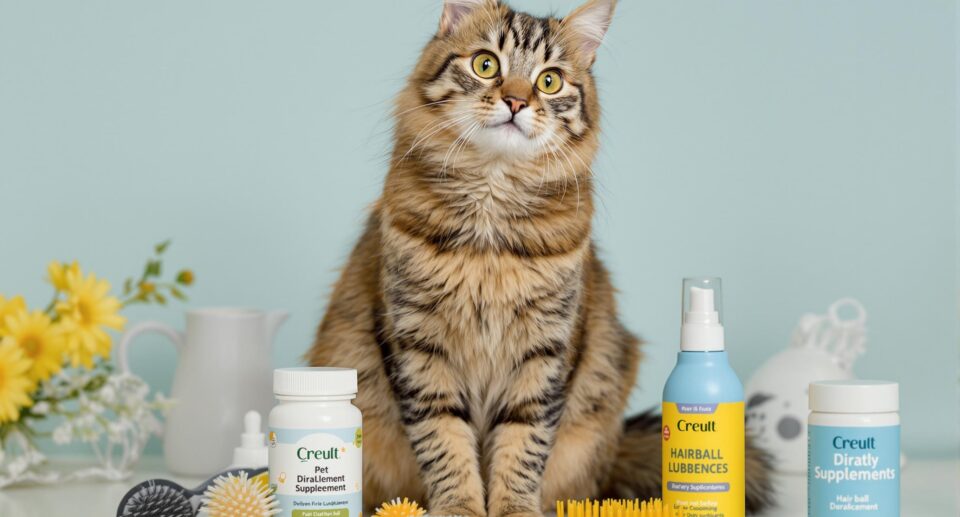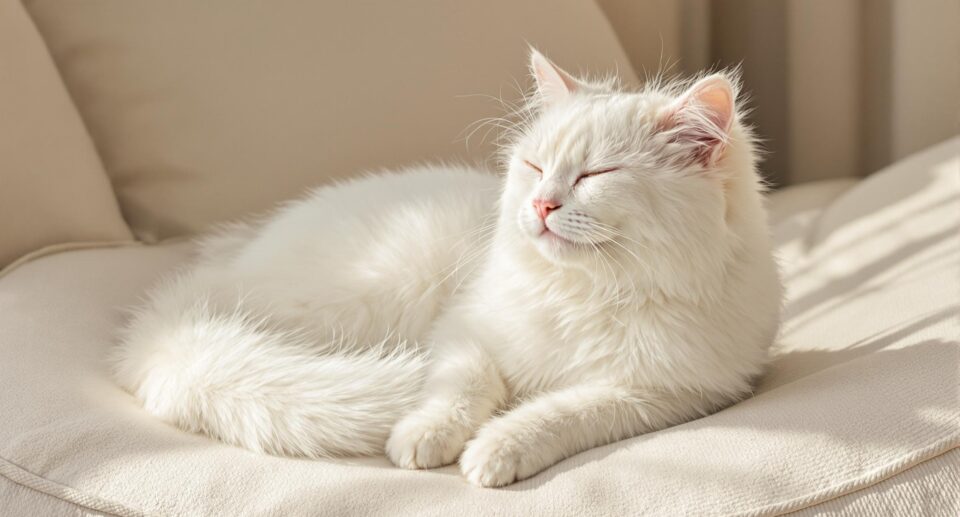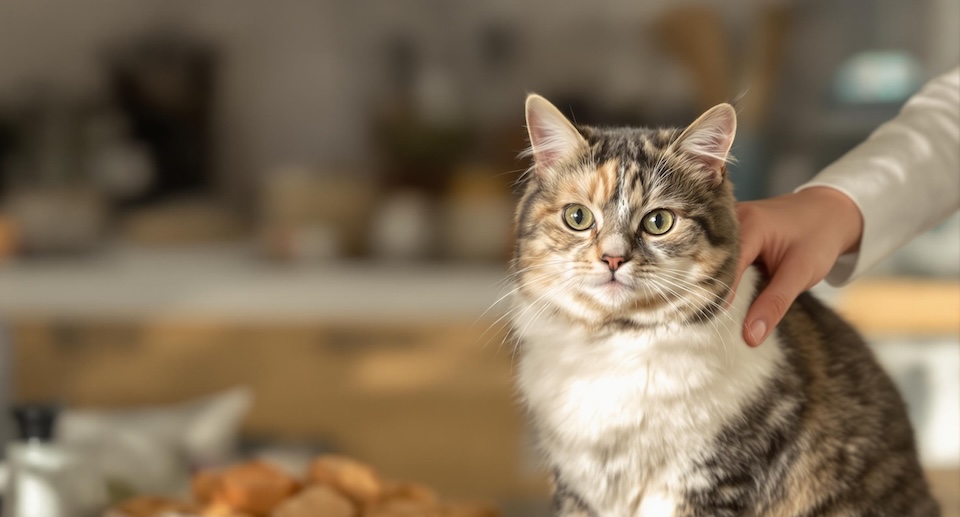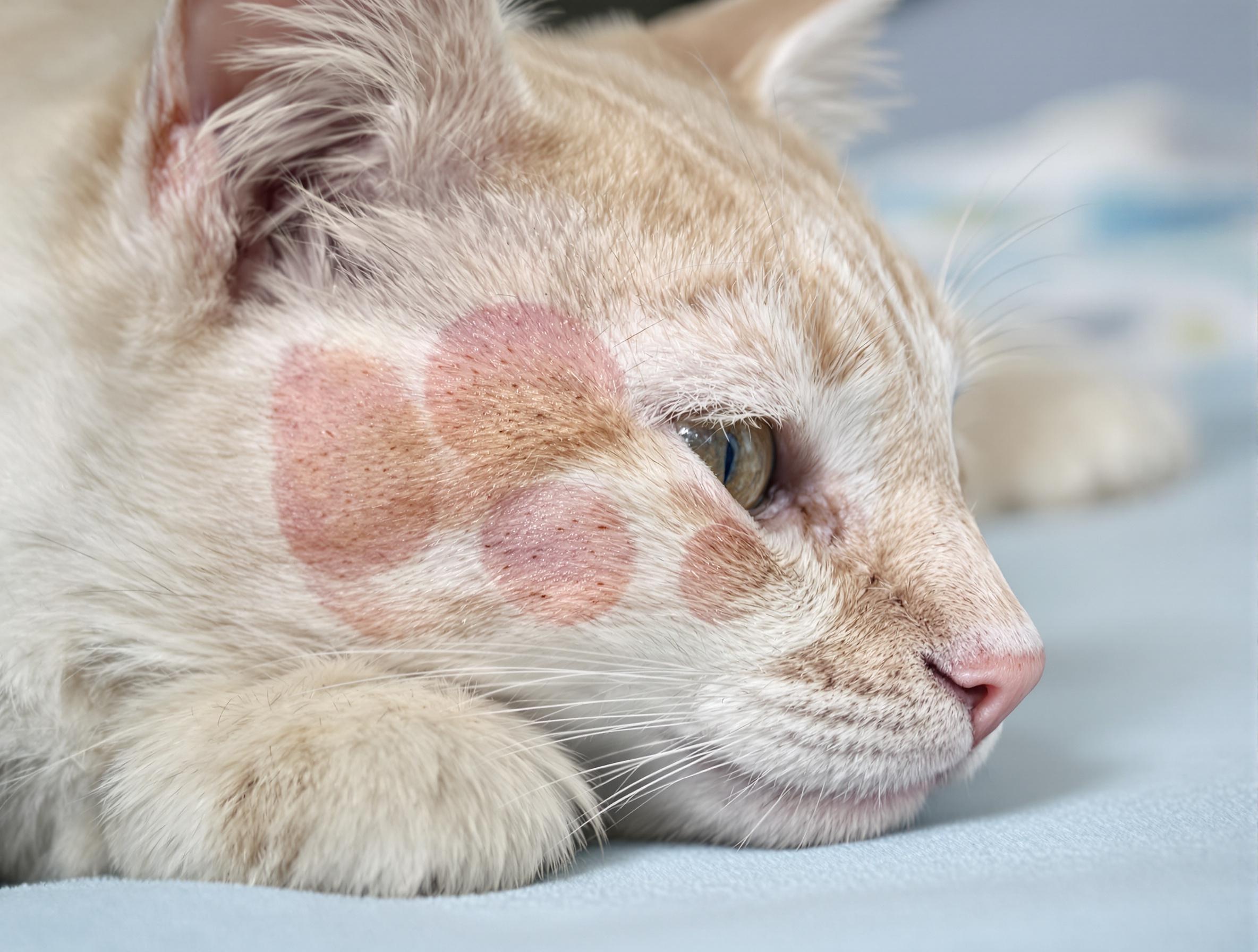When To See A Vet About Hairballs In Cats

In 2006, the National Museum of Health and Medicine dubbed every last Friday in April “National Hairball Awareness Day.” Though most cat parents are familiar with the yacked-up globs of fur, there are some important things you might not know about hairballs.
What Causes Hairballs in Cats?
Your cat’s tongue is covered in tiny hooks made up of keratin, the same material that makes up hair and nails. These hooks are angled backwards. When they use their tongues to groom themselves, some of their loose fur gets stuck to their tongue and is drawn towards the back of their mouth by those hooks.
It’s inevitable that cats will swallow some fur while self-grooming. Though fur cannot be broken down by your cat’s stomach acid, in small amounts it can pass through the digestive system without issue, eventually ending up in their feces.
If a cat swallows a particularly stubborn clump of fur, it may be too large to pass from the stomach to the small intestine. Instead, it will combine with stomach acid and bile, causing mild gastric discomfort until your cat vomits it up. A hairball usually has a long, cylindrical shape from passing through the esophagus.
How Often Do Cats Throw Up Hairballs?
It’s not unusual for cats to throw up hairballs from time to time. Cats can pass hairballs as often as every two weeks.
Normally, the cat will gag a few times before producing a hairball. It tends to happen suddenly, and the cat should seem to feel much better afterwards, resuming normal behavior.
You should be concerned if your cat has multiple hairballs each week, loses their appetite, or if they cough or gag without producing a hairball.
Why Do Some Cats Get A Lot of Hairballs?
Frequent hairballs could be a sign of digestive issues or overgrooming.
Cat parents may see more hairballs during shedding seasons, which happen in the spring and fall. During this time, you can reduce hairballs by grooming your cat daily to remove loose shed fur.
Cats may also get hairballs if they over-groom themselves in attempts to relieve pain or itching due to any number of issues including allergies and joint inflammation. They instinctively hide signs of pain, so hairballs may be the only sign that something is bothering your cat.
Grooming is also a calming behavior. Cats may over-groom when they’re anxious, which in turn can result in more hairballs. Treating your cat’s anxiety can help alleviate a hairball problem. If your cat’s digestive system is not working properly, though, even normal amounts of loose fur can cause vomiting. Inflammation of the digestive tract, which can be caused by parasites, inflammatory bowel disease, or food sensitivities, can make a cat more susceptible to hairballs. Excessive hairballs, especially if accompanied by loss of appetite, weight loss, or vomiting without hairballs, warrant a vet visit as soon as possible.
When A Hairball is More Than A Hairball
Other health issues are often mistaken for a hairball problem. For example, respiratory infections and asthma in cats may present as coughing, which can sound similar to a cat trying to pass a hairball.
In rare cases, a hairball may remain stuck in the stomach or small intestine, and can snowball into a blockage. A cat with a blockage may gag in attempts to dislodge the blockage but will be unable to bring it up, and they will usually be unable to eat. If you suspect your cat has a blockage, seek emergency veterinary care, as it may be life-threatening.
Preventing Hairballs in Cats
Even though occasional hairballs are not usually harmful, the fewer your cat has, the better. Brushing your cat is the best first line of defense because you’ll eliminate loose fur before your cat can swallow it.
Your vet may recommend an over-the-counter lubricant like Laxotone or Petromalt to help hairballs pass smoothly through your cat’s digestive system. Cat probiotics and digestive supplements can aid digestion in cats with mild gastric issues.





